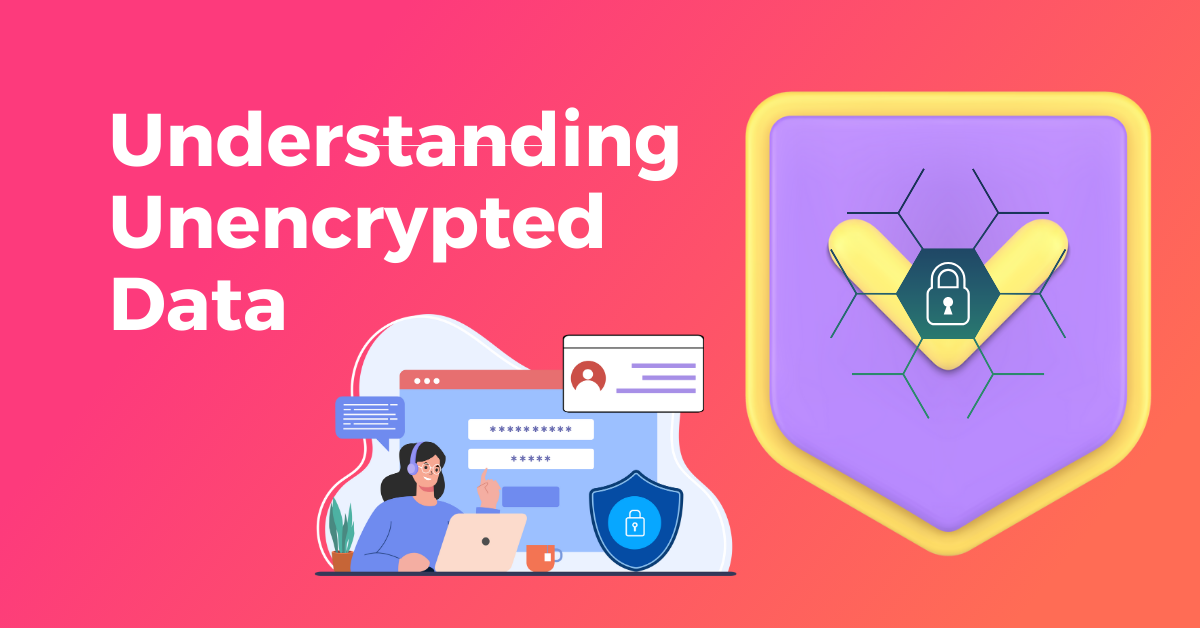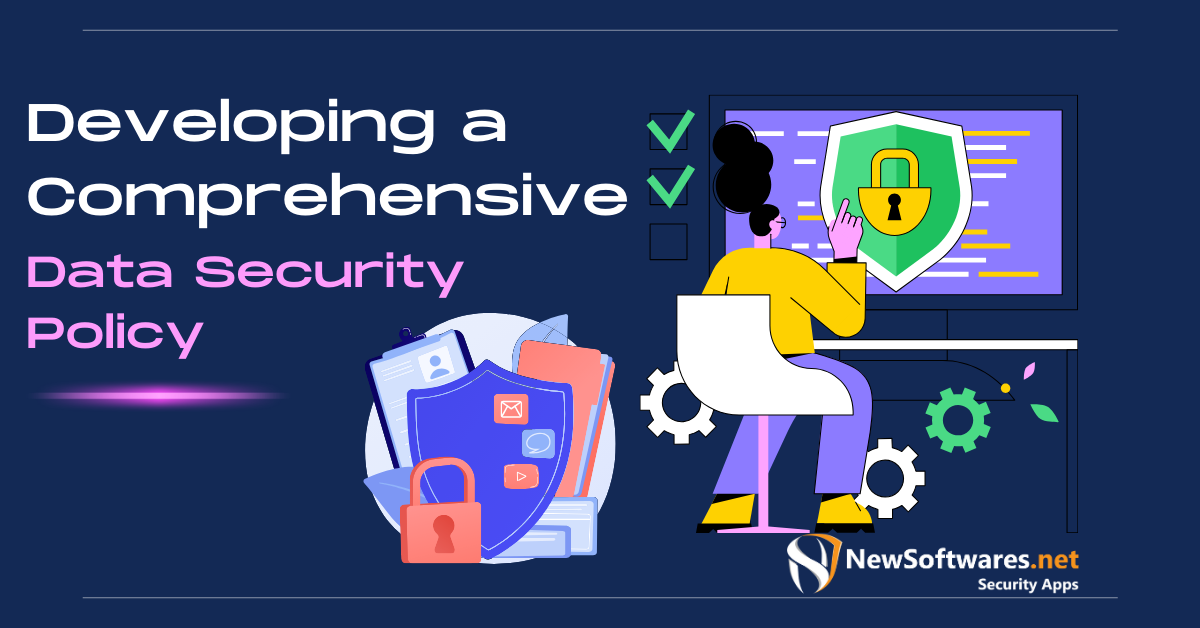To secure unencrypted data, one should encrypt the data, use secure storage solutions, limit access, and implement strong security protocols.
Data security has become a pressing concern for personalities and organizations in today’s digital age. With the continuous threat of cyber-attacks and data breaches, it is crucial to understand how to secure unencrypted data. We will delve into the importance of data security, explore strategies for securing unencrypted data, discuss data security policies and procedures, and highlight tools and technologies that can help protect your valuable information.
Understanding Unencrypted Data

Before discussing the various aspects of securing unencrypted data, it is essential to understand what it means. Unencrypted data refers to any information stored or transmitted in plain, readable format without applying encryption algorithms. This means anyone accessing the data can read and understand its content.
To further illustrate this concept, let’s imagine a scenario. You have a treasure chest filled with valuable items. However, instead of locking it securely with a strong padlock, you leave it wide open for anyone to see and take whatever they please. This is essentially what unencrypted data is like – it leaves your sensitive information exposed and vulnerable.
What is Unencrypted Data?
Unencrypted data is akin to leaving your front door wide open, allowing anyone to walk in and access your personal or sensitive information. It can include anything from bank account details and personal identification numbers to confidential business data and customer information.
Imagine that you have a document containing your bank account facts, social security number, and other personal info. If this document is unencrypted, anybody who gains access can easily read and misuse the information. It’s like writing down your secrets on paper and leaving it on a park bench for anyone to find.
Risks Associated with Unencrypted Data
The risks associated with unencrypted data are substantial. Hackers and malicious actors actively target unencrypted data, exploiting vulnerabilities to gain unauthorized access and steal sensitive information. They can use this information for malicious purposes, such as identity theft, financial fraud, or even blackmail.
Furthermore, unencrypted data can also be vulnerable to accidental exposure or loss. Imagine carrying a USB drive containing valuable business data and accidentally dropping it in a public place. If the data on that drive is unencrypted, anyone who finds it can easily access and misuse it, potentially causing significant harm to your business and its reputation.
Moreover, the lack of encryption in data transmission can expose it to interception and tampering. For example, imagine sending a colleague an email with confidential information. If the email is unencrypted, it can be intercepted by a malicious third party, who can then read or modify the content without your knowledge.
Ultimately, unencrypted data puts your privacy and the trust of your customers at stake. It is crucial to implement robust encryption measures to protect sensitive info and ensure the security and integrity of your data.
The Importance of Data Security

With the increasing occurrence and sophistication of cyber attacks, the importance of data security cannot be overstated. Data is indispensable in our personal lives and integral to the smooth functioning of modern businesses.
Data security involves implementing measures to protect data from illegal access, use, disclosure, disruption, modification, or destruction. It encompasses various aspects, including physical security, network security, encryption, access controls, and employee education.
The Role of Data in Modern Business
In today’s data-driven world, businesses rely heavily on data for decision-making, analysis, and operations. Data forms the backbone of many organizations, from customer profiles and transaction records to intellectual property and trade secrets. Protecting this valuable resource is critical to maintaining a competitive edge and ensuring business continuity.
Data security safeguards sensitive information and enables businesses to comply with legal and regulatory requirements. For instance, organizations handling personal data must adhere to data protection laws, such as the Over-all Data Protection Regulation (GDPR) in the European Union.
Potential Consequences of Data Breaches
The consequences of a data breach can be far-reaching and devastating. Besides financial repercussions, such as expensive legal battles and regulatory fines, a data breach can severely damage a company’s status. Clients and stakeholders may lose trust in the organization, losing business and opportunities.
Furthermore, data breaches can result in significant operational disruptions. Organizations may experience downtime, loss of productivity, and the need for extensive data recovery efforts. This can have cascading effects on various aspects of the business, including customer service, supply chain management, and overall profitability.
Moreover, data breaches can have serious implications for individuals with compromised personal information. Uniqueness theft, fraud, and other forms of cybercrime can have long-lasting consequences for the affected individuals, leading to financial losses, emotional distress, and a loss of confidence in online services.
Given these potential consequences, organizations must prioritize data security and take proactive measures to prevent and mitigate data breaches. This includes implementing robust security measures, conducting regular risk assessments, educating employees about best practices, and staying updated on the newest threats and security technologies.
Strategies for Securing Unencrypted Data
Luckily, there are several strategies and best practices that can help secure unencrypted data and minimize the risk of unauthorized access or loss.
When it comes to securing unencrypted data, one of the most effective ways is through encryption techniques. Encryption includes using algorithms to convert data into an illegible format, which can only be deciphered with the correct encryption key. Encrypting sensitive information will be incomprehensible and useless even if it falls into the wrong hands.
Various encryption techniques are available, such as symmetric encryption, asymmetric encryption, and hashing. Symmetric encryption uses a single key to encrypt and decrypt the data together, although asymmetric encryption customs a pair of keys – a public key for encryption and a remote key for decryption. Hashing, on the other hand, converts data into a fixed-size string of characters, making it impossible to reverse-engineer the original data.
Implementing secure data storage is another crucial aspect of securing unencrypted data. Secure servers, firewalls, and access controls can help ensure data is stored in a protected environment. Secure servers are designed to have enhanced security features, such as intrusion detection systems and encryption capabilities, to safeguard the data stored within them.
Firewalls are a barrier between a trusted internal network and an untrusted outside network, monitoring and controlling incoming and outgoing network traffic. Organizations can prevent unauthorized access to their data storage systems by implementing firewalls.
Access controls, such as strong passwords, multi-factor authentication, and role-based access control, are vital in securing unencrypted data. Strong passwords should be complex, unique, and regularly updated to prevent unauthorized individuals from accessing sensitive information. Multi-factor verification adds a layer of security by requiring workers to provide multiple forms of ID, such as a password and a fingerprint scan. Role-based access control safeguards that only authorized individuals have access to specific data based on their organizational roles and responsibilities.
In addition to encryption and secure data storage, regular backups are essential for securing unencrypted data. Backups should be performed both on-site and off-site to provide an additional layer of security and ensure data recovery in case of an incident. On-site backups can be easily accessible and quickly restored, while off-site backups safeguard against physical damage or theft of the primary data storage.
Furthermore, organizations should have a comprehensive incident answer plan to address security breaches or data loss incidents. This plan should include steps for covering and mitigating the impact of the incident, as well as procedures for notifying affected individuals and regulatory authorities, if necessary.
In conclusion, securing unencrypted data requires a multi-layered approach that includes encryption techniques, secure data storage, regular backups, access controls, and a well-defined incident response plan. Organizations can reduce the risk of unauthorized access or loss of unencrypted data by employing these strategies and best practices.
Data Security Policies and Procedures
Developing and implementing comprehensive data security policies and procedures is essential for safeguarding unencrypted data. These policies act as guidelines for employees and outline the necessary steps to maintain data integrity and confidentiality.
Data security policies are crucial for protecting sensitive information and ensuring compliance with legal and regulatory requirements. Organizations can demonstrate their commitment to data protection and build trust with their customers and stakeholders by having well-defined policies in place.
When developing a comprehensive data security policy, it is important to consider various aspects to cover all potential vulnerabilities. User authentication is critical, as it ensures that only approved individuals have access to sensitive data. Strong authentication methods, such as two-factor authentication or biometric verification, can significantly enhance data security.
Access controls are another crucial aspect of data security policies. Organizations can minimize the risk of unauthorized access by defining who can access specific data and under what circumstances. Role-based access control (RBAC) is a commonly used approach where access privileges are assigned based on an individual’s job role and responsibilities.
Developing a Comprehensive Data Security Policy

A comprehensive data security policy should also address the acceptable use of data. This includes guidelines on how employees should handle and share data and restrictions on using personal devices for work-related activities. Organizations can minimize the risk of data leakage or misuse by clearly defining acceptable use.
Incident response is another critical aspect that should be covered in a data security policy. It outlines the steps to be taken during a data breach or security incident. This includes reporting the incident, containing the breach, conducting forensic investigations, and notifying affected parties. Having a well-defined incident reply plan can help minimize the impact of security happening and ensure a swift and effective response.
Data retention is also an important consideration. Organizations need to define how long data should be retained and establish processes for securely disposing of no longer needed data. This helps reduce the risk of data being stored unnecessarily and potentially becoming a target for unauthorized access.
Regular Data Security Audits and Updates
Regular data security audits are vital to identify any vulnerabilities or weaknesses in your data security measures. These audits should include comprehensive assessments of your network infrastructure, software, and employee adherence to data security policies. By regularly reviewing and assessing your data security measures, you can proactively identify and address any potential gaps or vulnerabilities.
Based on the audit findings, necessary updates and enhancements can be implemented to strengthen the security of unencrypted data. This may involve implementing additional security controls, updating software and firmware, or providing additional training to employees. It is important to stay current with emerging threats and industry best practices to confirm that your data security measures remain effective.
In conclusion, developing and implementing comprehensive data security policies and procedures is crucial for safeguarding unencrypted data. Organizations can enhance their data security posture and protect sensitive information from unauthorized access or disclosure by addressing various aspects such as user authentication, access controls, acceptable use of data, incident response, and data retention.
Tools and Technologies for Data Security
An extensive range of tools and technologies available can assist in securing unencrypted data and fortifying your overall data security posture.
Overview of Data Security Software
Data security software encompasses various solutions to protect data at rest and in transit. These include encryption software, intrusion detection and prevention systems, antivirus software, and vulnerability scanners. Respectively these tools play a crucial role in mitigating different data security risks.
Choosing the Right Data Security Tools for Your Needs
When selecting data security tools, you must consider your specific requirements, budget, and the nature of the data you must protect. Consulting with cybersecurity professionals and conducting thorough research will help you make knowledgeable choices and choose the most suitable tools for your organization.
Key Takeaways
- Encrypting data is the primary method to secure it.
- Store data in secure environments, such as encrypted hard drives or cloud storage.
- Limit and monitor access to sensitive data.
- Regularly back up data and store backups securely.
- Stay updated with the newest security patches and best practices.
FAQs
Q: Why is encryption important?
A: Encryption transforms data into a code to prevent unauthorized access, making it one of the most effective ways to secure data.
Q: How can I store unencrypted data securely?
A: Use secure storage solutions like encrypted hard drives, cloud storage, or other protected environments.
Q: What is the importance of limiting access to data?
A: By limiting who can access the data, you reduce the risk of unauthorized access, leaks, or breaches.
Q: Why should I back up my data?
A: Regular backups ensure that a secure copy is available for recovery in the event of data loss or corruption.
Q: How do security patches play a role in data security?
A: Staying updated with the latest security patches helps to fix vulnerabilities and protect data
Conclusion
In conclusion, securing unencrypted data is imperative in today’s digital landscape. By understanding the risks associated with unencrypted data, recognizing the importance of data security, implementing robust strategies, adhering to comprehensive policies, and leveraging appropriate tools and technologies, individuals and organizations can effectively protect their valuable information from unauthorized admittance and potential breaches. It is a shared responsibility to stay vigilant and proactive in safeguarding unencrypted data to ensure a secure and resilient digital environment.
